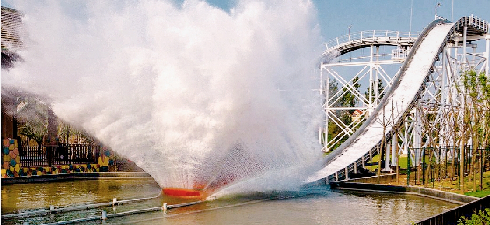Fundamentals of Designing a Simple Roller Coaster for Amusement Parks
Basic Roller Coaster Design An Introduction to Thrills and Engineering
Roller coasters are the epitome of the thrill-seeking experience, combining speed, height, and gravity-defying elements to create an exhilarating ride for passengers. Designing a roller coaster is a fascinating intersection of creativity and engineering. It not only requires a sound understanding of physics but also a deep appreciation for the psychology of thrill. This article will delve into the basic principles of roller coaster design, focusing on the key elements that contribute to an exhilarating ride.
1. Understanding the Physics Gravity and Inertia
At the heart of roller coaster design lies the fundamental principles of physics, particularly gravity and inertia. A roller coaster operates on the basic principles of potential and kinetic energy. When the coaster car is lifted to the highest point of the track, it possesses maximum potential energy. As it descends, this energy is converted into kinetic energy, which propels the car forward at high speeds. Designers must carefully calculate these energy transformations to ensure the ride is both thrilling and safe.
Another critical factor in roller coaster design is inertia, which is the tendency of an object to resist changes in its state of motion. Riders experience different forces or accelerations during the ride, particularly at turns, drops, and inversions. The design must create a balance that maximizes the thrill without exceeding safe limits for the passengers. For example, sharp turns can create sudden changes in inertia, leading to feelings of weightlessness or increased g-forces, which are pleasurable to riders.
2. Track Design Shape and Flow
The shape and flow of the roller coaster track are crucial to the overall experience. Designers often use computer simulations to model the track and predict how it will perform under various conditions. There are several types of coaster layouts, including wooden, steel, and hybrid designs, each offering unique ride characteristics.
Steel coasters, for instance, allow for more intricate designs with smoother transitions and sharper turns due to their flexibility. In contrast, wooden coasters tend to provide a more rugged experience with an emphasis on drops and airtime hills. Designers often incorporate elements such as corkscrews, loops, and camelbacks to create varied experiences. The placement and design of these elements must ensure that riders enjoy consistent thrill without sacrificing safety.
basic roller coaster design

3. Safety Features Engineering Resilience
Safety is paramount in roller coaster design. Engineers must comply with rigorous safety standards and regularly conduct testing to ensure that each ride can withstand the forces it will encounter. Key safety features include harnesses and lap bars that secure riders during the wild ride. Additionally, designers include redundancy in safety systems to prevent accidents even in unforeseen circumstances.
Moreover, the materials used in the construction of roller coasters must be durable and resilient. Modern coasters often utilize advanced composite materials that withstand weather conditions and prolonged wear. Regular maintenance and inspections are also crucial to ensure the continued safety of the ride.
4. Psychological Aspects The Thrill Factor
The psychological experience of riding a roller coaster is as important as the physical aspects. Riders often seek adrenaline rushes; the anticipation of a drop followed by a sudden release can create a euphoric experience. Designers use elements like climbs and pauses to heighten suspense before plunging into thrilling descents. The balance of fear and joy is a delicate one, as it is essential for riders to feel safe while enjoying the adrenaline rush.
Additionally, sensory elements such as speed, noise, and visual effects contribute to the overall thrill. Designers might incorporate themed environments, soundtracks, and lighting to enhance the experience, immersing riders into a narrative that complements the physical ride.
Conclusion
Basic roller coaster design is an intricate blend of science, engineering, and psychology that culminates in the thrilling rides we love. Understanding the principles of physics, creating captivating track designs, ensuring robust safety measures, and considering the psychological impact on riders are all crucial components of this engineering marvel. As technology advances and new materials are developed, the future of roller coaster design promises to bring even more innovative and exciting experiences for thrill-seekers around the world. Whether it's a dizzying loop or a breathtaking drop, the thrill of a well-designed roller coaster will always be a cherished adventure.
-
Top Amusement Equipment Manufacturer Rock n Roller Coaster & Carousel ManufacturerJun.10,2025
-
World's Scariest Roller Coaster Experience Ultimate Thrill & HeightJun.10,2025
-
Ultimate Thrill Ride Roller Coaster High-Speed, Safe AdventureMay.30,2025
-
Carousel Mansfield Rides Premium Indoor & Event SolutionsMay.30,2025
-
T3 Roller Coaster High-Thrill, Safe Ride for Theme Parks & ResortsMay.30,2025
-
Roller Coaster Cart Design Custom-Built & High-Safety Thrill Ride VehiclesMay.30,2025
